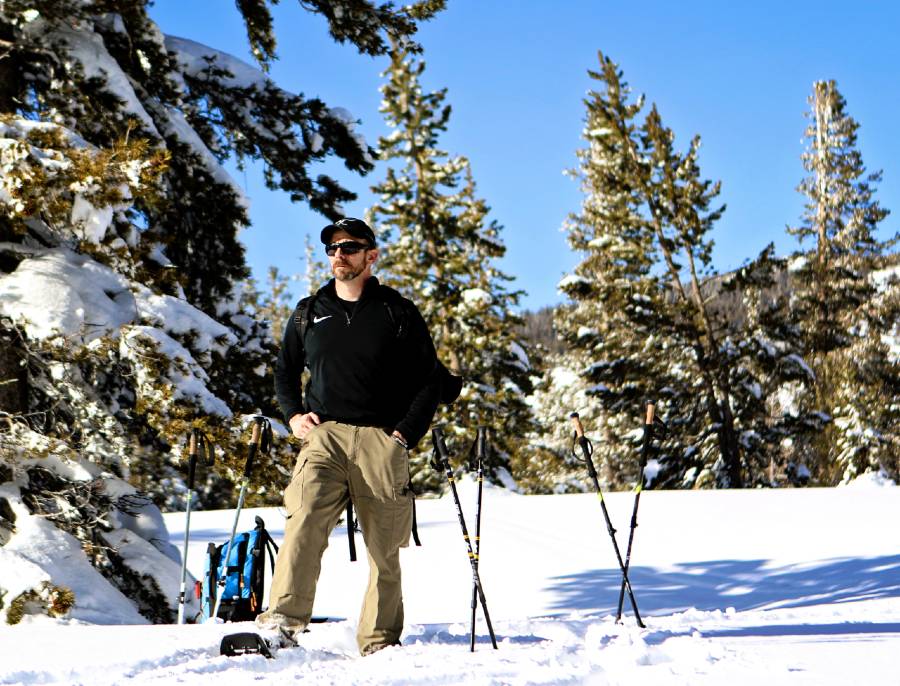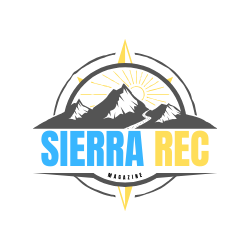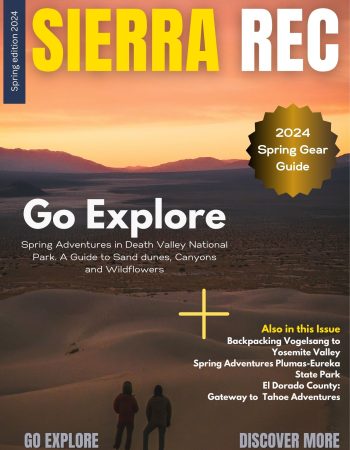
Sierra Rec Magazine Snowshoe Guides For The Sierra
A Simple Guide To Starting a Snowshoe Adventure Lifestyle
Snowshoeing is one of our favorite activities. However when I started five years ago I had no idea how to start or how much I would love this blank canvas of adventure. There are a few simple tips I can share with you as a beginner snowshoe adventurer. If you have considered giving it a try but don’t know which shoes to buy or where to go to find a fun and safe adventure, then this guide is for you. Our goal is to ease your fears and doubts to this wonderful winter sport that could change your life. After a few basic tips below we will share with both our favorite Snowshoe locations in the Sierra but several Snow Shoe guides to our favorite places to walk in the snow.
What Size Snow Shoes Should I Buy
The first question to answer after deciding that Snowshoeing is a sport you want to do is what size snowshoe should you wear? snowshoe size is best determined by your weight.
Also, if you are backpacking on snowshoes, be sure to account for the weight of your pack when choosing a size, since this may push you into a different weight range.
Snowshoe Sizing.
| Weight: | Length: |
|---|---|
| 80-160 lbs | 21-23 inches |
| 120-200 lbs | 25-27 inches |
| 150-260 lbs | 30 inches |
| 180-300+ | 35-36 inches |
Does size of snowshoe matter?
A bigger snowshoe means more surface area which, in turn, means more flotation. Generally speaking, the “right” snowshoe is one that delivers the flotation you need, while being small enough to keep you nimble on the trail. If in doubt I always suggest a little bigger snowshoe.
Does Brand Matter with Snowshoes?
So is there a difference between the $69.99 pair of snowshoes at Costco vs the $300 dollar pair recommended online? Of course there is. The Question you should ask; Is it big enough difference for your use case?
Things you should consider are the following:
- How often to you think you will snowshoe? Quality equals longevity in this case much of the time.
- Weight of the snowshoe? Often the cheaper models do weigh more, which means more work for your legs. how far do you intend to hike?
- What terrain are you snowshoeing in? Going up or down hills is a bit of a challenge in some snowshoes? Companies like MSR specialize in gear that is for backcountry snowshoeing?
- Is price the one obstacle keeping you from trying this new sport? I often tell friends, if the price is all that is keeping you from trying it then either buy cheap now and learn to love it, or go rent a pair for the first time or two then decide what investment you want to make.
Where to Snowshoe
Here is the reality with Snowshoeing, similar to cross country skiing, you can go just about anywhere for a beautiful day in nature, as long as there is snow of course. In the sierra Nevada during the winter many of the Scenic regions are closed because their access highways are closed. so Snowshoeing typically occurs close to a road or at a Sno-Park.
Places like Lake Tahoe, Truckee or Mammoth, there are multiple locations that are easy for visitors to park and enjoy a great day in the mountains safely.
Spooner Summit or Tahoe Meadows and Kingsbury North Trailhead on the Eastside of Lake Tahoe are popular destinations for locals and visitors.
Editors Choice for Snowshoeing near Lake Tahoe:
- Carson Pass to Winnemucca Lake
- Brautovich / North Tahoe Rim trial Loop
- Chickadee Ridge Mt Rose
- Echo Lake
- Hope Valley
Dress in Multiple Layers
Dressing in multiple layers is the first essential tip for winter hikers. Depending on your location, hiking in winter weather can be cold and brutal. Therefore, you want to ensure you dress appropriately so that you can stay warm and protected from the elements. One layer of clothing probably isn’t going to do the trick in this type of weather, so you’ll want to dress in multiple layers. It’s a good idea to have an underlayer like thermal longjohns to start. Then you want to have a thick top layer to keep your heat from escaping during the hike. Adding an insulated jacket or coat on top of the other layers is going to help you stay as warm as possible. You may also want to wear hats and gloves to protect yourself.
Choose Appropriate Footwear
It’s also important to choose appropriate footwear when hiking in the winter months. Now that you sorted your clothes, you will also need to pick a good pair of shoes for your trek. If you’re hiking in the winter, chances are that there will be snow and ice on the ground, especially at higher altitudes. Not all types of footwear work well in the snow, so you’ll want to pick a kind that can withstand these conditions. Proper traction is key when selecting winter hiking boots to help you navigate the terrain. You should also consider comfort, durability, and insulation when choosing your footwear for winter hikes.
Sierra REC Magazine is dedicated to sharing the events, news and adventure opportunities in The Sierra Mountains. From Lassen Volcanic National Park to the North down through the Central Sierra and the Lake Tahoe Basin through the rugged eastern slopes of Mono county and Yosemite National park to the southern tips near Sequoia National Park and the PCT trail. We invite you to share stories, trips, and photos from your adventures in the Sierra. Please join us on Facebook, Twitter Google + and YouTube or email us your events and photos at sierrarecinfo@gmail.com #goexplore
Related Articles
- Sierra Rec Now – Valentines in the Mountains – Episode 7
- Fischer Announces new Freestyle ski — Nightstick
- Alpacka Raft Releases Three New Models for 2024
- 33rd Annual Rocky Mountain Oyster Fry returns on Saturday, March 16
- Backpack Through The Wildest Corners Of The Sierra Nevada.
- Experience The Thrill Of Tubing At Woolly’s Tube Park In Mammoth Mountain, California
- A Valentines Treat at Virginia City’s Piper House
- Tahoe Regional Planning Agency Honored with Rosa Parks Award




